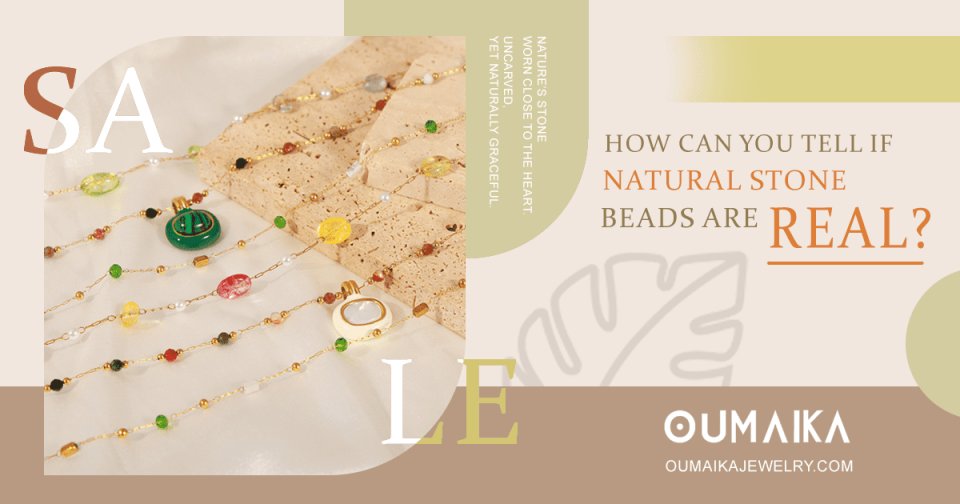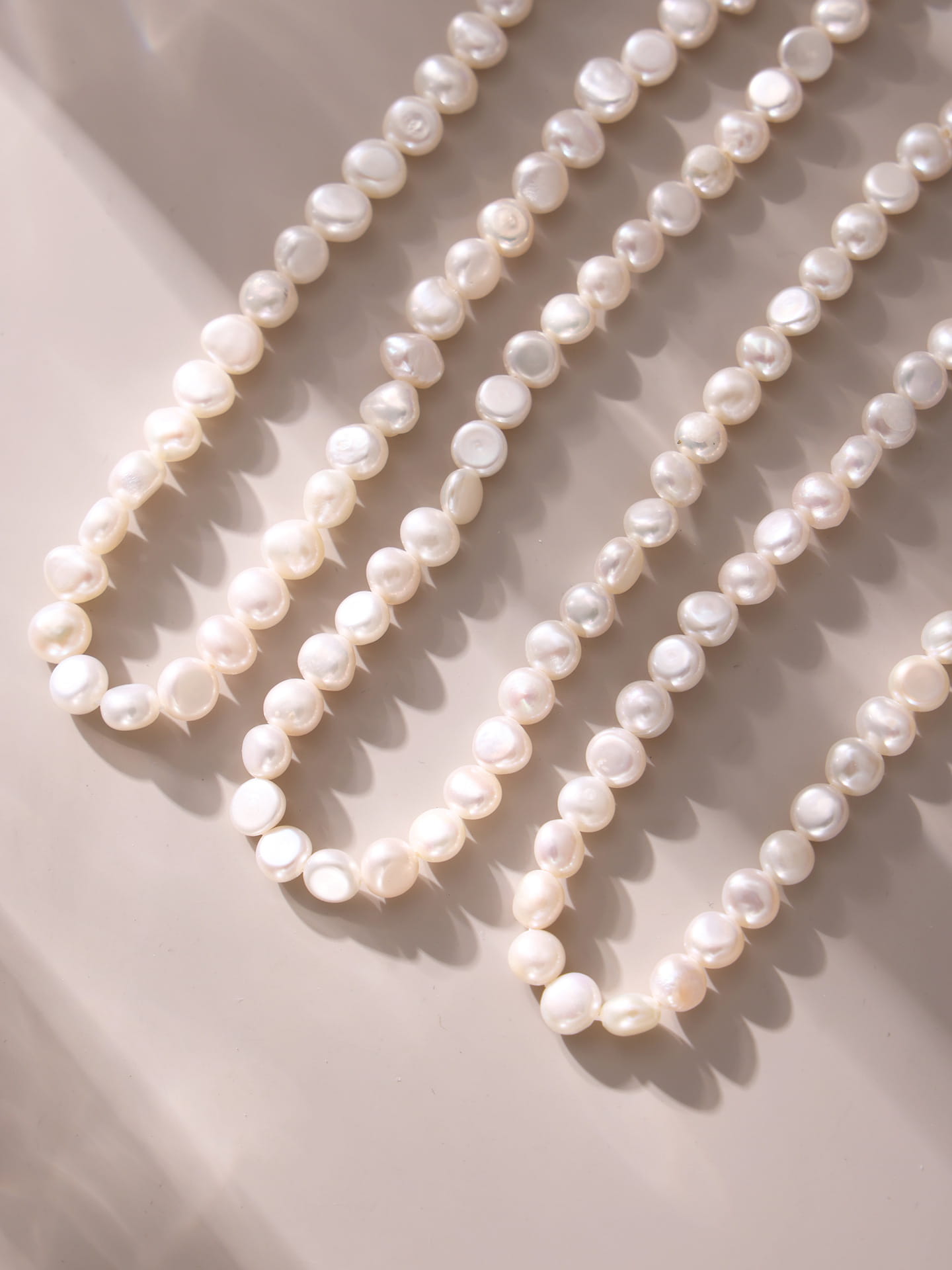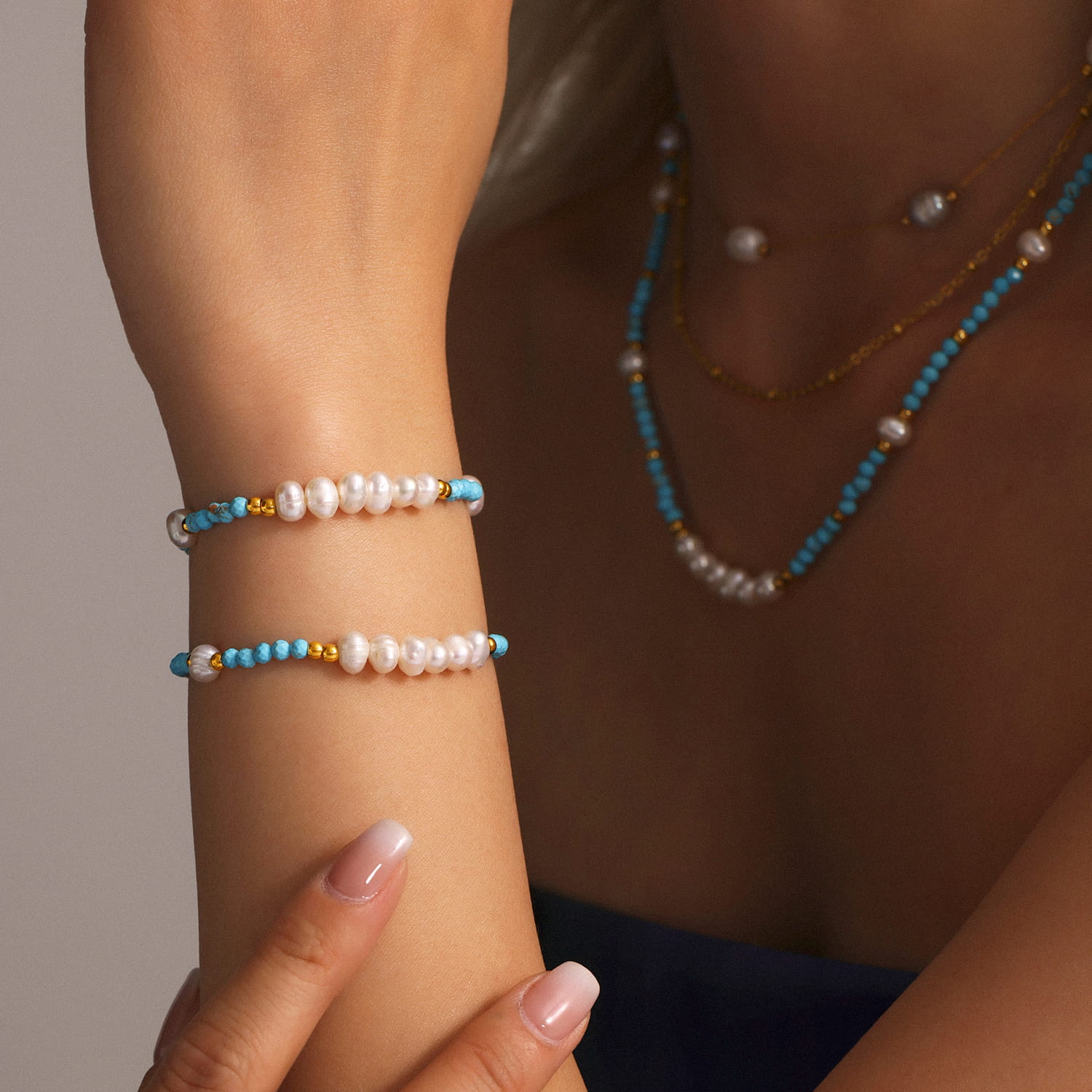
- by admin
- 20.05.2025
- Jewelry Culture & Symbolism
How can you tell if natural stone beads are real? Expert Insights from a Stainless Steel Jewelry Maker
As the operator of OumaikaJewelry, I’ve spent over a decade curating authentic gemstone bead necklaces that pair nature’s artistry with stainless steel’s industrial resilience. With counterfeit beads flooding the market, distinguishing genuine stones from clever imitations is critical. Below, I’ll share professional techniques we use to verify natural stones, ensuring every piece in our collection meets rigorous authenticity standards.
Visual Inspection: Nature’s Fingerprints
Real gemstone beads typically show tiny imperfections and variation. For example, authentic beads often have minute pits or color swirls; perfectly uniform or super‑smooth beads are suspect. You can usually feel the difference too: natural stones tend to feel cool to the touch and heavier than plastic or glass imitations. In fact, genuine stones are denser, so a strand of real beads will have more weight. Examine the surface: a real gemstone bead should feel slightly gritty or textured, not glassy smooth. Jewelry experts note that an “utterly smooth” bead is likely manmade. Bright, vibrant color is another clue – natural stones usually exhibit subtle tone shifts rather than flat, uniform hues. You can also consider hardness: authentic stones score high on the Mohs scale and resist scratches. A gentle hardness test or expert examination can confirm this. By combining these checks – weight, temperature, texture, and shine – you can often distinguish a real gemstone bead from a fake one.
- Color Variations: Genuine stones like turquoise or amethyst exhibit uneven color zones and organic patterns. For example, our Lapis Lazuli Gemstone Necklace shows natural gold pyrite flecks.
- Surface Textures: Authentic stones have minor pits, cracks, or inclusions – like the feather‑like veining in our Malachite Bead Choker.
- Case Study: A customer once questioned a “too perfect” tiger’s eye bead bought elsewhere. Under magnification, our stone’s fibrous patterns contrasted a uniform resin texture.
The Weight Test: Density Doesn’t Lie
It’s not just the beads that matter – the metal parts do too. Stainless steel provides a tough, long‑lasting setting for natural stones. Stainless steel resists scratches, dents, and daily wear. Unlike silver or copper, stainless steel won’t tarnish easily or corrode over time. A quick wipe with a soft cloth is often all that’s needed to restore its shine. Many high‑grade stainless steels (like surgical 316L) are also hypoallergenic, so they’re safe for sensitive skin. This means an Oumaika gemstone necklace not only looks great but stays beautiful. By pairing genuine gemstone beads with quality stainless steel findings, you get jewelry that can withstand sweat, water, and years of wear without losing its luster.
How It Works: Natural stones have higher density than glass or plastic imitations. A genuine Carnelian Gemstone Bead Necklace feels substantially heavier than a same‑sized fake.
Oumaika’s Quality Control: We use calibrated scales to measure bead density during sourcing. For instance, authentic rose quartz weighs ~2.65g/cm³ – about 18% heavier than dyed quartzite.This ensures our stainless steel jewelry settings can securely hold stones without strain.
Temperature Response: The Stone’s Breath
The Science: Natural stones absorb and release heat slowly. Press a bead against your cheek:
- Real: Stays cool for 5–7 seconds
- Fake (Glass/Resin): Warms quickly
Pro Tip: Try this with our Black Onyx Bead Bracelet – its volcanic origins give it a persistently cool touch, even in summer heat.
The Scratch Test: Hardness as a Hallmark
Mohs Scale Guide:
- Lapis (5–5.5): Steel knife (5.5) leaves a scratch
- Jade (6–7): Glass (5.5) can’t scratch it
Warning: Never test finished jewelry! We conduct controlled hardness tests pre‑production. Our Jade Gemstone Necklace beads withstand steel blades, confirming their 6.5+ hardness.
Professional Verification: Certificates & Tech
When DIY Tests Aren’t Enough:
- UV Light: Real rubies fluoresce red; synthetic ones glow unnaturally bright.
- Refractometer: Measures light bend angles (e.g., true amber: 1.54 vs. plastic: 1.63).
Oumaika’s Protocol: Every gemstone bead necklace comes with:
- Gemological Certificates from accredited labs like GIA
- XRF Reports verifying no artificial dyes or stabilizers
Why Oumaika’s Gemstone Jewelry Stands Apart
Ethical Sourcing: We partner with Rajasthan garnet miners and Brazilian agate harvesters, tracing each stone’s origin.
Stainless Steel Synergy: Our 316L steel clasps and chains are engineered to complement stone weights, preventing failures common in softer settings.
Lifetime Verification: Lost your certificate? Send us close‑up photos – our gemologists provide free authenticity checks.
Customer Story: Marine biologist Elena purchased our Aquamarine Bead Necklace for saltwater expeditions. After 2 years of ocean exposure, the steel remained rust‑free, and the beads retained their natural crystal patterns.
Conclusion: Trust Built on Transparency
Identifying real stones requires expertise sharpened through years of hands‑on work. At OumaikaJewelry, we blend traditional gemology with cutting‑edge tech to deliver stainless steel jewelry that honors Earth’s artistry. When you choose Oumaika, you choose style and substance. Our team personally vets every gemstone strand and steel component. In summary, you get the peace of mind that your necklace is made from real gemstones and high‑grade steel – an authentic, long‑lasting accessory you’ll love to wear.



